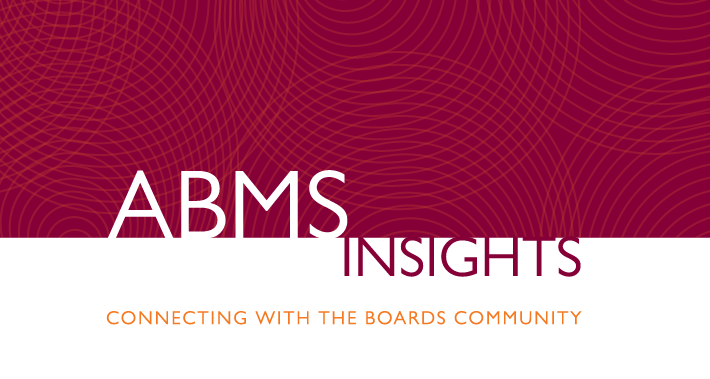
The American Board of Medical Specialties (ABMS) has incorporated patient perspectives in its decision-making for nearly 50 years.

In 1975, the first public member (previously called members-at-large) was appointed to the ABMS Board of Directors (BOD). Anne Somers was an author, teacher, labor organizer, and champion for health care reform who began her first two-year term in 1976. Initially, two to three public members served on the ABMS BOD.
As part of the Enhanced Public Trust Initiative of 2008-2011, ABMS made a commitment to expand its efforts to gather feedback from the public about its programs and share information about the education and certification of physicians. This meant raising the number of public members on the BOD to six and increasing the number of public members to serve on ABMS standing committees, ad hoc committees, and task forces. As an example, public members now serve on the BOD of the ABMS Research and Education Foundation, Executive Committee, Committee on Certification, Committee on Continuing Certification, Ethics and Professionalism Committee, Finance Committee, and Stakeholder Council. “Increasing the involvement of patients and the public has expanded the medical profession’s sensitivity to the needs of patients and the communities that physicians serve, noted Carrie Radabaugh, MPP, Senior Vice President of Governance and Board Relations at ABMS. “Additionally, ABMS’ standards and policies have benefited from the guidance of individuals with diverse experiences, perspectives, and backgrounds.”
Public members serving on the ABMS BOD represent patients and individuals with a broad range of experience in patient advocacy, administration, education, business, regulatory policy, and law. During each BOD meeting, the public members have their own caucus, during which they discuss current issues that the Board is addressing but looking through the lens of patient and public concerns. The Public Member Caucus also provides opportunities to proactively develop sessions for full BOD engagement. At the BOD meeting held this past February, public members developed and executed a panel discussion reviewing and showcasing the full range of ways in which Member Boards incorporate patient and public voices in their work. Additionally, based on a recommendation from public members, ABMS BOD members participated in several volunteer activities benefitting literacy, hunger, and cancer charities in local communities during the Board’s recent annual retreat; something that will be repeated at future retreats, Radabaugh said. “The public members on our Board remind us to focus on the human element of care,” she added. “They have been instrumental in ensuring that we remember that better patient care is a primary goal of the work we do in partnership with the Member Boards.”
In 2011, ABMS approved a policy that enables the public to review and comment on proposals for new specialties and subspecialties being considered. This third-party comment period has been extended to other items, such as the Standards for Initial Certification, criteria for Focused Practice Designations, and applications for admittance of new medical specialty boards to membership in ABMS.
The new Standards for Continuing Certification, which were approved by the ABMS BOD in October 2021, were developed through a comprehensive and transparent process that involved more than 100 stakeholders representing specialty physicians, state medical societies, health plans, academic medicine, continuing medical education, and credentialing bodies, as well as patient advocates and patients. Seven of the 27 members on the 2018 Continuing Board Certification: Vision for the Future Commission (Vision Commission) were public members. Additionally, thousands of individuals and organizations provided feedback on the draft Standards during an 80-day public comment period. Building on the recommendations of the Vision Commission, the Standards that took effect Jan. 1, 2024, acknowledge that self-regulation is a collaborative process that requires the involvement of partners, including professional societies, hospitals, health systems, and patients — all of whom have a significant role in supporting physician engagement in meaningful learning and improvement work.
“Incorporating the perspectives, needs, and wishes of patients and the public in a meaningful way on the ABMS BOD and its various committees and task forces is key to improving health care, and ultimately supports the social compact between society and the profession itself,” Radabaugh said.
-
Read More:
- ABMS Insights |
- Leadership |
